Sensouji is the oldest and most famous Buddhist temple in Tokyo. Its origins date back to the year 628 when two guys were fishing in the Sumida River…
…and pulled out a statue or figurine of Kannon, the Buddhist goddess of mercy.
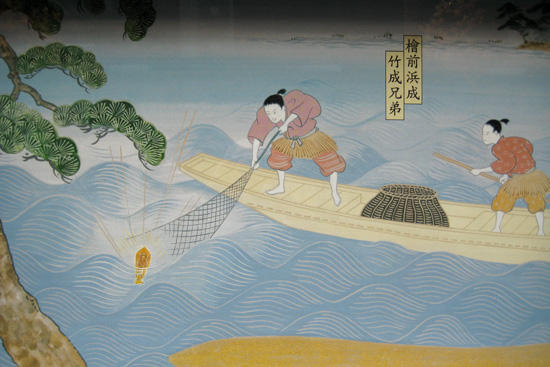
Kannon is an aspect of Buddha who embodies unlimited compassion and unconditional love, and is usually portrayed as a female figure with a crown, a halo, and multiple arms. (Supposedly the founder of the Canon camera company was a great fan of the goddess, hence the name.)
In any case the local people were so awed by the statue that they decided to build a suitable home for it. This eventually grew into an impressive complex of buildings as the temple gained nationwide fame.
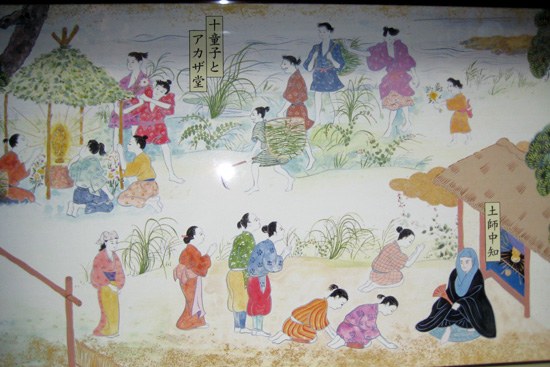
None of the buildings here are actually 1300+ years old. Traditional Japanese buildings are made of wood, with interior walls made mostly of paper. Thus, what with lightning, earthquakes and wars, they tend to burn down easily. Most really old buildings have been burned down and rebuilt multiple times. This temple complex was mostly destroyed during the Second World War, and has since been rebuilt.
The temple complex begins with the kaminari-mon (Thunder Gate), so called because it contains guardian figures representing the gods of wind and thunder.
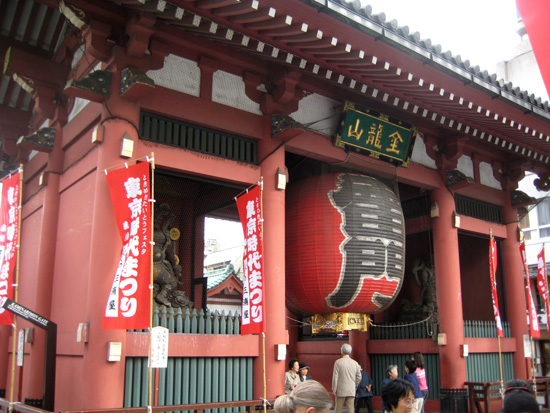
Going through the Thunder Gate, you enter the Nakamise-dori, a crowded walkway lined with shops.
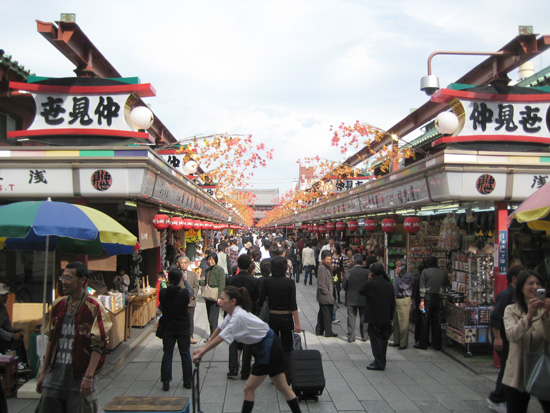
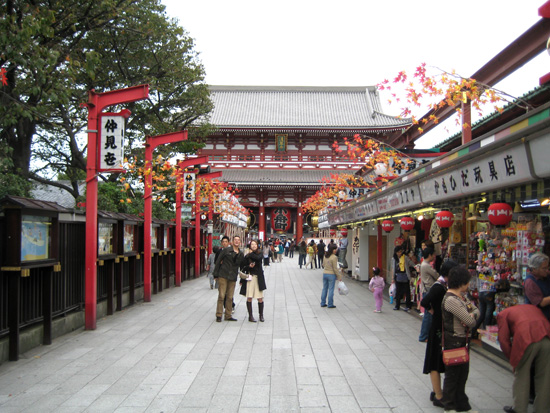
A wide variety of souvenirs and similar items are on sale.
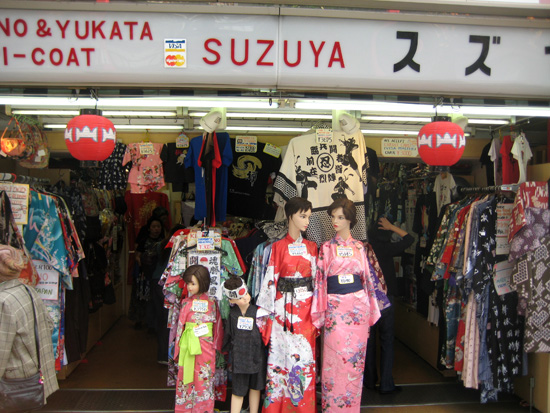
Groups of uniformed students can usually be seen here, presumably on class trips.
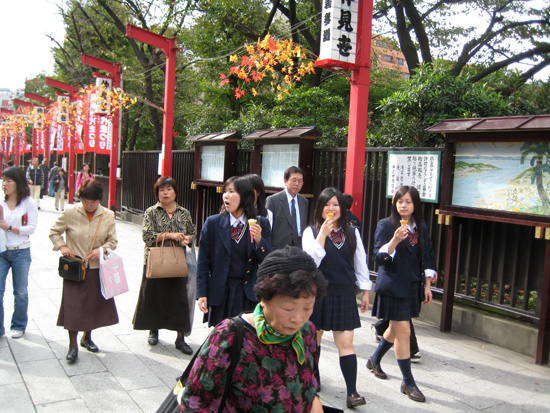
A shopkeeper splashes water on the entrance to her shop to purify it for customers.

Passing through an inner gate, we enter the main courtyard.
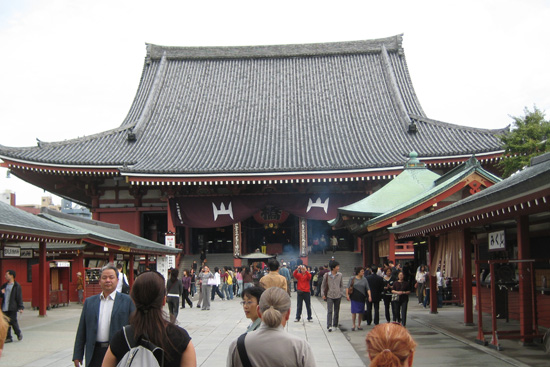
A traditional 5-story Buddhist pagoda is visible on the left.
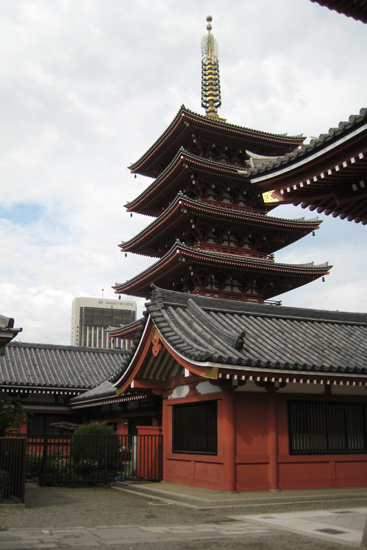
Visitors burn incense in a large cauldron and waft the smoke towards themselves.
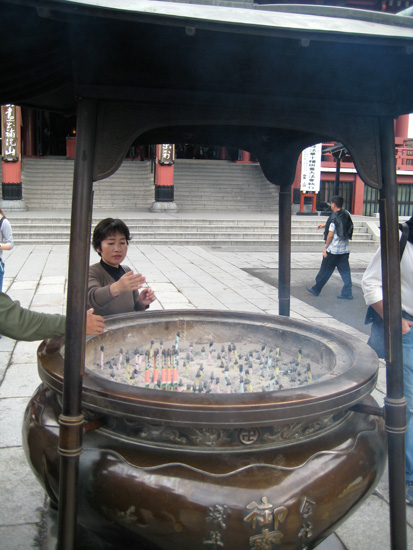
High school students buy fortunes. This may seem more like a Shinto practice, but Japanese Buddhism has been strongly influenced by Shinto, and vice versa.
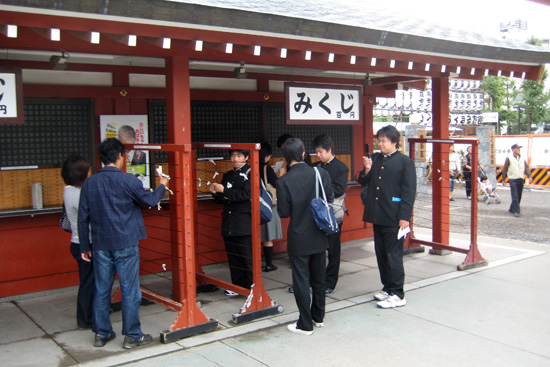
Unlike most temples, we are allowed to take pictures inside.
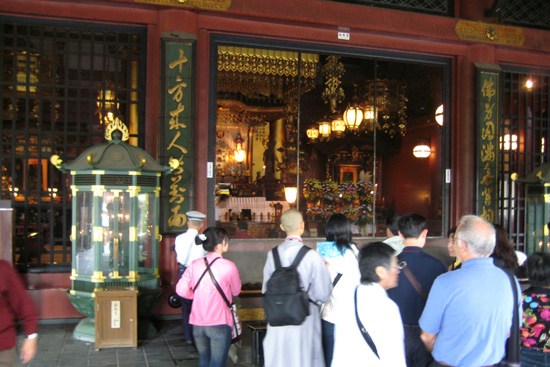
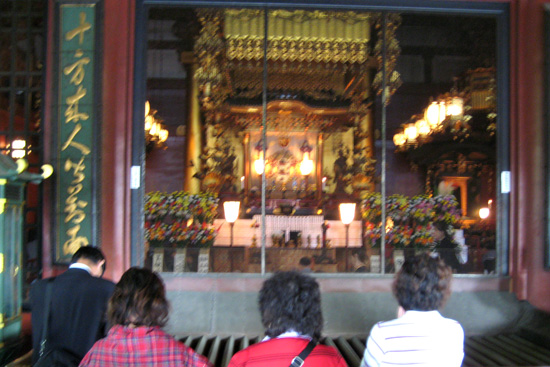
Note the ceiling paintings.
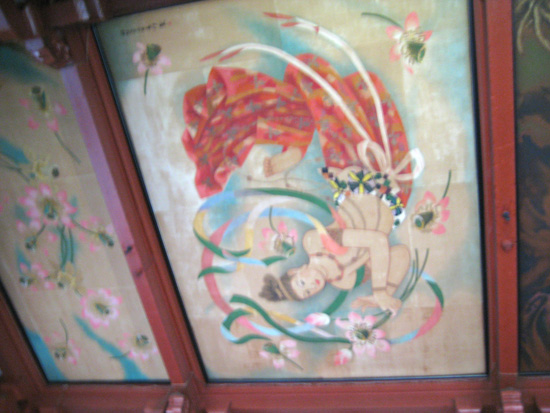
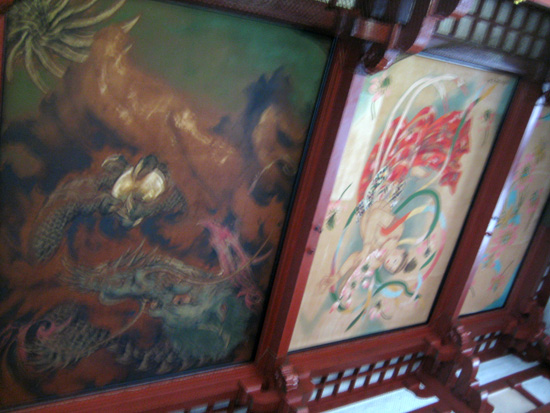
The miraculous statue of Kannon is kept deep within the temple in the innermost sanctuary, inside a special box, and nobody is allowed to see it.

